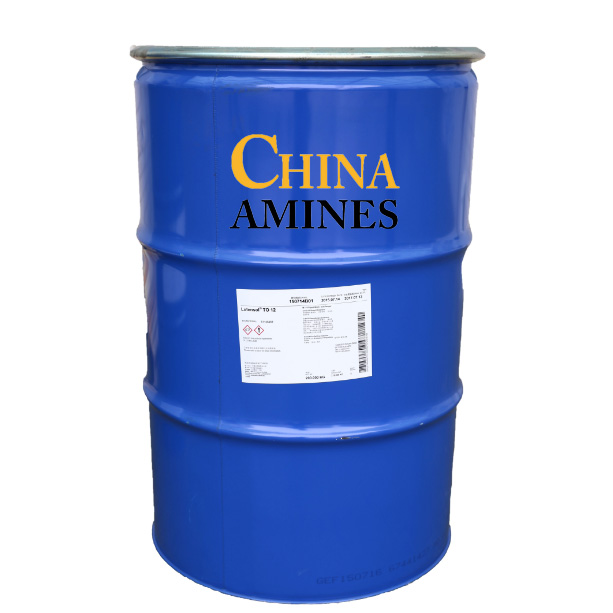Your Questions and Comments
Your sales and customer service desk partners within China Amines Co will continue to serve you. You can also contact us via our headquarter office-
Email:info@chinaamines.com
China Amines Co
Product Profile
1. Chemical Structure and Properties
Molecular Formula:
C₂H₇N
Structural Formula:
(CH₃)₂NH – A secondary aliphatic amine consisting of two methyl groups bonded to a central nitrogen atom.
Physical Properties:
- State: Colorless gas at room temperature; commonly handled as a 40% aqueous solution (boiling point ~51°C).
- Density: 0.68 g/cm³ (liquid); Vapor Pressure: 430 kPa at 20°C.
- Odor: Strong, fishy ammonia-like odor detectable at 0.03 ppm.
- Solubility: Fully miscible with water, ethanol, and ether.
Chemical Properties:
- Basicity: Weak base (pKa = 10.73), reacts with acids to form salts (e.g., dimethylamine hydrochloride).
- Reactivity: Participates in alkylation, acylation, and condensation reactions; flammable (flash point: -37°C).
2. Industrial Applications
Agrochemicals:
- Herbicide Production: Intermediate for glyphosate and 2,4-D herbicides.
- Insecticides: Synthesis of imidacloprid (neonicotinoid class).
Pharmaceuticals:
- Drug Synthesis: Building block for diphenhydramine and fluoxetine.
Rubber Industry:
- Vulcanization Accelerator: Produces tetramethylthiuram disulfide (TMTD).
Water Treatment:
- Corrosion Inhibitor: Forms protective amine films for pipelines.
Surfactants & Polymers:
- Quaternary Ammonium Salts: Produces cationic surfactants for detergents and fabric softeners.
Organic Synthesis:
- Catalyst in Grignard and polymerization processes (e.g., polyurethane foams).
3. Safety and Toxicology
Health Hazards:
- Inhalation (≥50 ppm): Severe respiratory irritation, pulmonary edema (LC50 rat, 4h: 4,400 ppm).
- Skin Contact: Corrosive burns and frostbite (liquid; rabbit skin LD50: 400 mg/kg).
- Eye Exposure: Permanent corneal damage.
- Ingestion: Highly toxic (oral LD50 rat: 540 mg/kg); causes necrosis.
Acute & Chronic Effects:
- Chronic Exposure: Potential liver/kidney damage and neurotoxicity.
Fire & Explosion Risks:
- Extremely flammable gas (range: 2.8–14.4% vol in air).
- Reacts violently with oxidizers (e.g., chlorine, nitric acid).
Protection Measures:
- PPE: Neoprene gloves, goggles, NIOSH respirators.
- Controls: Explosion-proof ventilation, gas detection systems.
4. Environmental & Regulatory Compliance
Environmental Impact:
- Aquatic Toxicity: LC50 fish: 100–200 mg/L; EC50 daphnia: 50–100 mg/L.
- Biodegradability: Rapid aerobic (half-life<5 days).
- Atmospheric Fate: Reacts with hydroxyl radicals (half-life ~8 hours).
Regulatory Frameworks:
- GB 13690-2009: Class 2.1 Flammable Gas & Class 8.2 Corrosive.
- OSHA PEL: 10 ppm; EPA TRI RQ = 100 lbs.
- CLP: Flammable Gas 1, Skin Corr. 1B, Acute Tox. 3.
- REACH: SDS required with mitigation measures.
Transport:
UN 1032 (anhydrous), UN 1163 (solution); Hazard Class: 2.1.
5. Case Studies & Insights
Case 1: Glyphosate Synthesis
DMA reacts with phosphorus trichloride for bisphosphonomethylamine precursor (Monsanto process); 40% solution yields 88% at 60°C.
Case 2: Pipeline Corrosion Inhibition
Chevron uses DMA-based filming amines to protect pipelines, reducing corrosion by 85% at 20 ppm.
Comparative Analysis:
- Pros: High reactivity in alkylation, low odor threshold.
- Cons: TMA offers better thermal stability.


